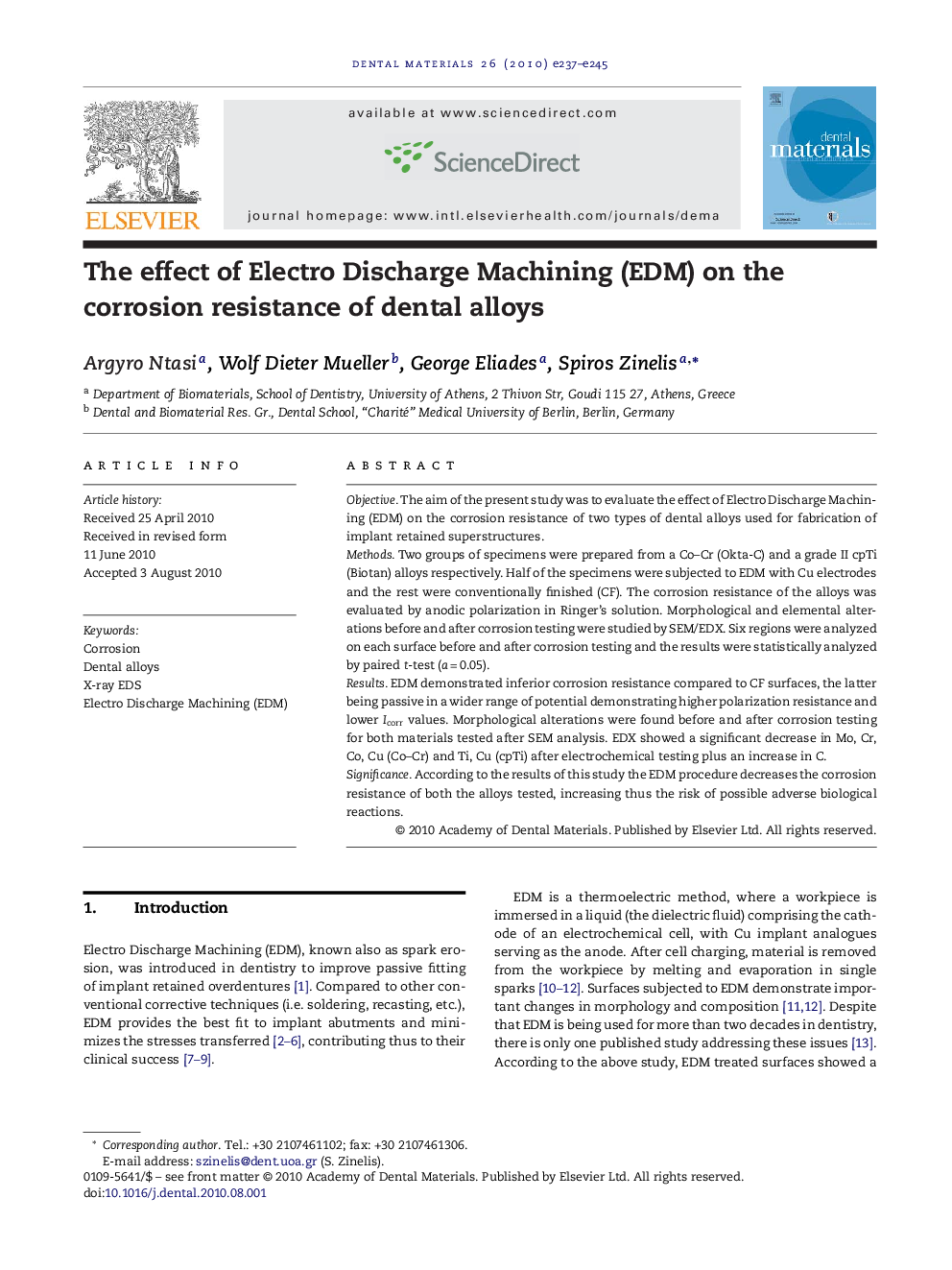| Article ID | Journal | Published Year | Pages | File Type |
|---|---|---|---|---|
| 1421391 | Dental Materials | 2010 | 9 Pages |
ObjectiveThe aim of the present study was to evaluate the effect of Electro Discharge Machining (EDM) on the corrosion resistance of two types of dental alloys used for fabrication of implant retained superstructures.MethodsTwo groups of specimens were prepared from a Co–Cr (Okta-C) and a grade II cpTi (Biotan) alloys respectively. Half of the specimens were subjected to EDM with Cu electrodes and the rest were conventionally finished (CF). The corrosion resistance of the alloys was evaluated by anodic polarization in Ringer's solution. Morphological and elemental alterations before and after corrosion testing were studied by SEM/EDX. Six regions were analyzed on each surface before and after corrosion testing and the results were statistically analyzed by paired t-test (a = 0.05).ResultsEDM demonstrated inferior corrosion resistance compared to CF surfaces, the latter being passive in a wider range of potential demonstrating higher polarization resistance and lower Icorr values. Morphological alterations were found before and after corrosion testing for both materials tested after SEM analysis. EDX showed a significant decrease in Mo, Cr, Co, Cu (Co–Cr) and Ti, Cu (cpTi) after electrochemical testing plus an increase in C.SignificanceAccording to the results of this study the EDM procedure decreases the corrosion resistance of both the alloys tested, increasing thus the risk of possible adverse biological reactions.
